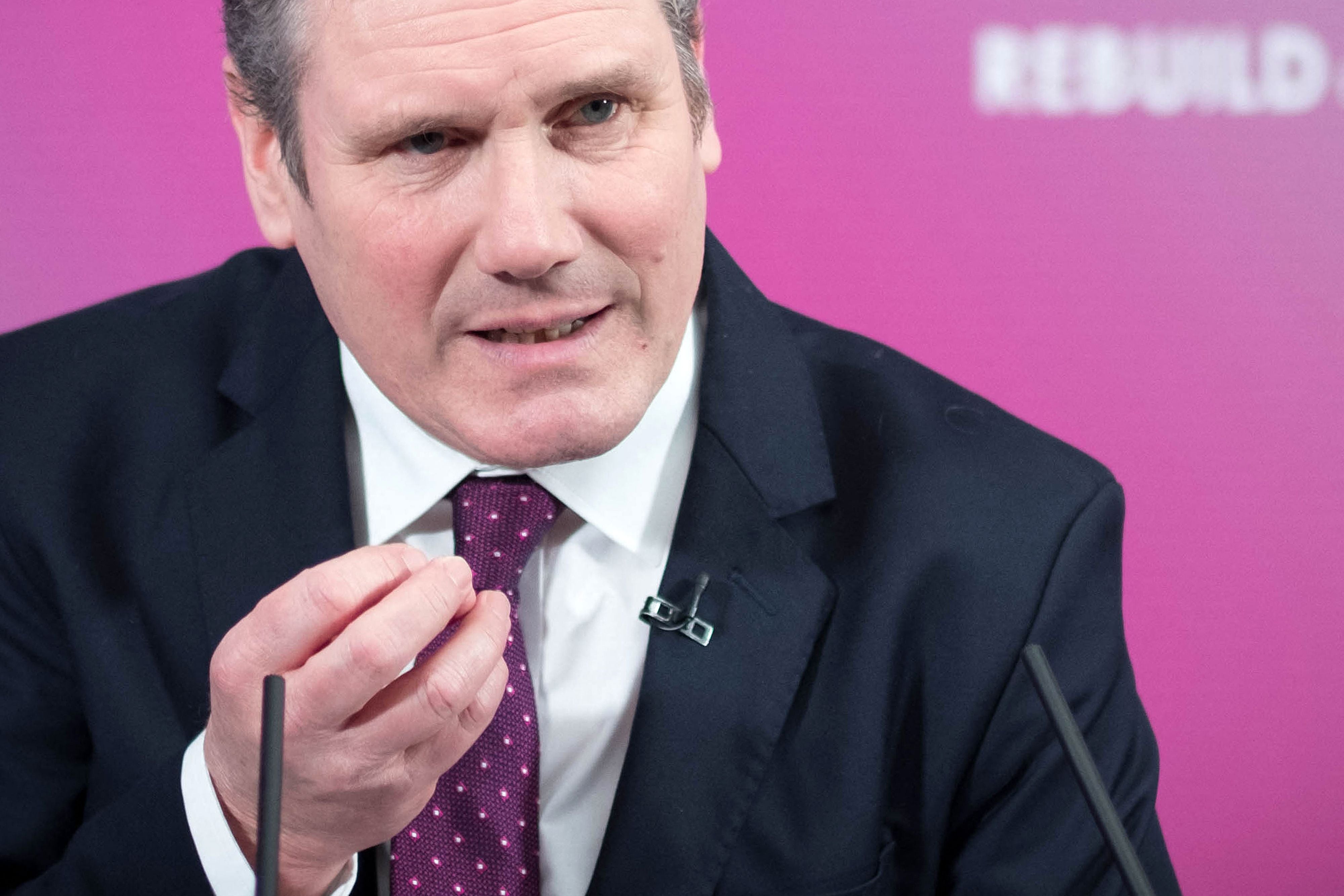Did Keir Starmer’s big economy speech actually have any economic policy?
There was one innovative policy in the Labour leader’s speech – but it was also a controversial one, says Ben Chu


Keir Starmer’s speech was billed as a major economic intervention from the Labour leader ahead of the 3 March Budget. Comparisons to the radical 1945 programme of Clement Attlee were invoked in briefings.
The speech did attempt to put the current crisis in the broader historical context of austerity and Starmer tried to articulate why his vision remains distinctive from that of a Conservative party that has, on the face of it, moved to the left on the economy under Boris Johnson.
He also called for a “new partnership” with business, drawing a divide with the “expropriation” debates of the Jeremy Corbyn era.
Yet, in the end, the speech was largely free of new economic policy specifics.
There was a commitment to extend both the £20 a week universal credit increase and the furlough scheme and to increase public sector wages in real terms. But these are existing positions from Labour.
Just two new policies were unveiled. The first was a proposal for “start-up loans” for 100,000 new small firms.
The comparison is somewhat unfair in the context of the current emergency, but this idea inevitably looks under powered when the government has underwritten £45bn of billions of loans to 1.5 million small firms over the past year via its Bounce Back Loan Scheme.
The second policy was what the Labour leader called a “British Recovery Bond”. That’s more economically and institutionally radical – though also more contentious.
Labour says this would involve the government raising money directly from the public through savings bonds like the ones currently issued by National Savings and Investments (NS&I), the state-owned savings bank formerly called the Post Office Savings Bank and founded in 1861.
Savings collected from 25 million customers by NS&I (currently around £180bn) go into the government’s general coffers.
But Labour has suggested money raised by a Recovery Bond would be used specifically to fund the incoming National Infrastructure Bank, and so would “rebuild communities and support businesses”.
On the face of it this seems an odd idea from the point of view of stewarding the public finances.
The state can borrow at record low interest rates from big institutional investors such as banks, insurance companies and pension funds.
Indeed, after allowing for inflation, it can borrow at negative rates. And there is strong demand for its bonds in both domestic and global markets. So the government doesn’t need to cultivate new sources of funding.
When former Conservative chancellor, George Osborne, expanded NS&I in 2015 by creating new “Pensioner Bonds” the government offered interest rates to elderly savers above the rates at which the government could borrow in the general market.
This was done for political, rather than economic reasons, notably to placate a powerful lobby of savers up in arms about the low deposit rates on offer from banks.
When Starmer unveiled his idea it initially looked as if he might have been heading in the same questionable direction of subsidising older wealthier savers at the expense of the general (and on average younger) taxpayer.
But Labour has since confirmed that its interest rate would be “similar to the rest of the market”.
That lessens any potential subsidy for savers. Yet it also immediately raises the question of why, in that case, savers would be interested in the savings product?
It’s possible that the interest rate on the bond could still be slightly higher than commercial bank deposit rates, which, in the context of almost zero returns on offer from banks, might still generate substantial demand.
Moreover, the view from Labour and advocates of the policy is that people would be attracted less by the interest than by the sense that they are directly helping to rebuild the country because the funds would go on infrastructure, rather than the general public spending pot.
Savers could be offered the chance to become investors in a new, popular capitalism
“Savers could be offered the chance to become investors in a new, popular capitalism,” argues James Meadway, who was an advisor to former Labour shadow chancellor John McDonnell.
The accountant and left wing activist Richard Murphy likewise sees a “massive social gain” from something that will “link savings directly to investment”. He also thinks this would discourage people from putting their money into a potentially overheated stock market.
But it’s not just those on the left who are in favour of the idea.
The former Conservative pensions minister Ros Altmann has suggested something very similar to the Starmer idea. And Jake Berry, the chair of the Northern Research Group of Tory MPs, recently advocated a similar sounding “Northern Infrastructure Bond”.
The Daily Mail business editor, Ruth Sutherland, has harked back to a war loan issued by the British government in the First World War, as a way of capitalising on people’s patriotic impulses in a time of national crisis.
Many orthodox economists are somewhat sceptical of the idea of the government running the risk of borrowing more expensively than it needs to.
“The bond would only makes financial sense if it allows the government to borrow at lower rates than otherwise,” says Julian Jessop.
The argument for this kind of scheme is a clearly a political economy case, rather than a theoretical public finance one.
And it’s not clear how strong that case is. It’s worth noting that the 1914 war loan, despite offering higher interest rate than the market, was actually initially significantly under subscribed by the public despite the mythology around patriotic savers rushing to fund the war effort.
But could there be a macroeconomic management justification too?
In his speech Starmer pointed to research from the Bank of England showing that many people have accumulated significant savings during the past year of lockdowns that they are unlikely to spend – and this bond is a good way of soaking up some of those funds and putting them to productive work.
Again, some point out that these savings can be tapped by the government just as easily through conventional bond issuance (via the public’s deposits in the banking system).
But the economist Jonathan Portes argues that there might be case for soaking up those savings directly if people are otherwise minded to spend them in a hurry, something that could stoke an inflationary boom in the coming years.
“If you really want a more sustainable investment-led recovery then locking up some of that household savings directly in financing government investment might make sense,” he says.
Dan Corry and Peter Kenway of the New Policy Institute have made a similar case, and argue that this kind of recovery bond issuance could help the “reshaping” of the economy away from consumption to investment.
“From a political point of view, the bond promotes the idea that this reshaping needs to be done and can be speeded on its way if those with unexpected savings devote them to this purpose.”
Perhaps. But there are also other, perhaps more proven and direct, ways of curbing a consumer spending boom, such as the Bank of England raising its own interest rate.
In the end, it’s not clear how significant a new recovery bond would be even if it were implemented.
Starmer spoke of raising “billions” through the scheme to invest in local communities. But the government’s gross public sector investment plans imply £650bn of spending over the next five years and a similar-sized net cash requirement.
Even if it materialised, a British Recovery Bond would only be one source of funding for state public spending and very likely a relatively minor one for a government that would continue to primarily fund its deficits in the conventional bond markets.
Join our commenting forum
Join thought-provoking conversations, follow other Independent readers and see their replies
Comments
Bookmark popover
Removed from bookmarks